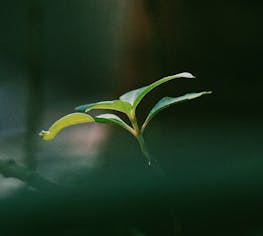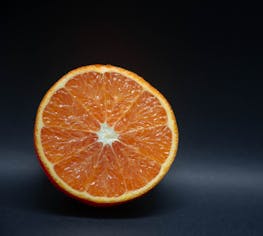Silent Spring Summary
The Classic that Moved the Environmental Movement
'One swallow does not make a summer,' so imagine spring without birdsong? Silent Spring was written in response to this very real reality.
Silent Spring is quite simply a book that changed the world, and its central question centers on whether humans should control nature. Much loved naturalist David Attenborough, claims that it's the book that had the most significant impact on natural science, after Charles Darwin's On the Origin of Species.
Rachel Carson was a stoic, brave, and private woman, who cared deeply about the environment and the influences that humans have on it. She dedicated her life to warning people about the lasting impact of pesticides. Although the book became a manifesto for the environmental movement, this was not Carson's intention. Nonetheless, Silent Spring was embraced by many activists, and it shaped many policies and views. In short, it started a revolution.
Carson came from humble beginnings, and was a graduate student at Johns Hopkins University. She studied biology and took up part-time work, but had to leave her doctoral studies prematurely. To make ends meet, she got a job at the United States Bureau of Fisheries as a writer. Her ability to tell passionate and informative stories, led her to write three books on the ocean, which combined science and narrative reflection.
Some letters change the course of history. In 1958 Rachel Carson received one such letter, describing birds dropping dead. 'Over increasingly large areas of the United States, spring now comes unheralded by the return of the birds, and the early mornings are strangely silent where once they were filled with the beauty of bird song.' The cause of the birds' death was attributed to DDT, or Dichloro Diphenyl Trichloroethane.
There was already a growing concern around the use of pesticides and DDT, but Carson decided to investigate the effects of DDT for herself. Her research led her to conservationists and government contacts, and her question was, 'What has already silenced the voices of spring?' The answer to this question is contained in this incredibly brave, provocative, and landmark book.
We'll briefly look at Silent Spring as more than just the product of methodical scientific research; it's a universal text on our relationship with nature. The overarching message is to be mindful of the misuse of chemicals, because they profoundly affect nature and our health. This is ultimately a book that inspired a revolution, and continues to be cited as one of the most influential books on society, environmental policy, and the natural world.
âMan Is a Part of Nature, and His War Against Nature Is Inevitably a War Against Himself.â
DDT was publicly available in the US in 1945, as a pesticide and insecticide. Although Carson critiqued other pesticides, it was DDT that was particularly worrying. DDT was primarily used to eradicate mosquitoes and fire ants, and was sprayed over vast areas of the US.
There was also an economic element to the use of DDT. After World War II, where it was used to control lice and insect-borne diseases in soldiers, there was an excess supply of DDT. Hence, the industry looked for new ways to spread its use and actively marketed it to consumers.
Although concerns were raised about its use, this did little to halt its burgeoning popularity. In 1947, the researcher Dr. Bradbury Robinson, was of the opinion that DDT would "upset the natural balances," and have a snowball effect. However, as with all things, the public sentiment was very much mixed.
With growing research in the 1950s, the government regulated DDT more heavily, but certain states refused to restrict its use. A lot of the discourse around the use of pesticides, insecticides, and in particular DDT, centered around ideas of progress, and being "pro-Science" and industrialization. So, when people spoke out against its use, they were often met with narratives around stifling progress and needing to "move with the times."
'In Nature, Nothing Exists Alone.'
Carson found that DDT was the main culprit when it came to harmful pesticides and insecticides.
However, most noteworthy were her findings on the interconnectedness of environmental processes, and how many chain reactions are at stake. In nature, nothing happens in a vacuum. Once DDT enters the biosphere to kill the bugs, namely mosquitoes and fire ants, the story doesn't end there. The bugs are part of the food chain, which then threaten birdlife and fish. As humans are part of the food chain, the next logical step is that it can also threaten us. Ironically, in many cases, the original pests survived, but the landscape in which they lived was irrevocably damaged.
DDT is particularly potent because it accumulates in the environment. It remains in the water, and builds up in the bodies of everything that comes in contact with it. Therefore if you drink contaminated water, or anything that has ingested DDT, you become affected. Carson found that DDT may also alter our genes' structure and make us more susceptible to cancer and other undetermined consequences.
Furthermore, Carson noted how the overuse of chemicals results in resistance towards them. So, as with the overuse of antibiotics, where bacteria become resistant to certain antibiotics, the same theory applies to insecticides and pesticides. The problem was when bugs became resistant; the industry just developed more deadly chemicals.
The data and case studies that Carson studied and reviewed were not new, but they hadn't been circulated or made accessible to the public. And the keyword here is accessible.
Joan Didion famously said, 'We tell ourselves stories in order to live.' Environmental communication has always been a tricky field, and research points towards the fact that we need to create persuasive and engaging narratives around ecological issues; otherwise, people don't listen. One of the major successes of Silent Spring is how utterly compelling Carson's writing is.
For an environmental manifesto to sell more than two million copies is a testament to how poignant her argument is. At the heart of her findings is that nature is cyclical, and that if we poison it, it will poison us. She also has a way of instilling a genuine love and passion for nature, two ingredients that she believes foster a sense of responsibility, consequence, and accountability. Her ability to promote such a profound "sense of wonder" about nature, allowed her to weave together sentimentality and rigorous research.
Silent Spring's openingis "A Fable for Tomorrow," where Carson describes a utopia of nature within America. She juxtaposes this with the reality where she details the dying and suffering of animals. It's emotive, and it's effective, which spoke to her target audience â housewives. She wanted to draw attention to why so many people were finding so many dead animals and birds in their backyards.
Besides her ability to weave together science and storytelling, Carson also played to the nation's paranoia about radiation. She argued that society is horrified about radiation's genetic effects but, in stark contrast, is completely oblivious and indifferent to chemicals. This comparison was controversial, but she knew that she had to drop a metaphorical bomb in order for people to take notice of the severity of the situation.
âWhen the Public Protests, Confronted With Some Obvious Evidence of Damaging Results of Pesticide Applications, It Is Fed Little Tranquilizing Pills of Half Truth.â
In the context of the 1950s, Carson's findings were seen as an "indictment of the late 1950s," with many viewing them as "anti-progress." She argued that the need for humans to control the natural world was counterproductive, and that it was destroying the natural order of things. Enforcing too much science and technology into nature by way of dominating it, would only destroy the delicate balance of millions of ecosystems. Her accusations against the industry also included their move to spread disinformation, and the blind faith of public officials who accepted marketing without any research or critical thinking.
While many touted the benefits of industrialization and modernity, Carson offered counter-narratives and a push to move away from technology just for the sake of technology. However, despite her comprehensive findings, getting public buy-in wasn't easy, and she needed to shock the public into taking DDT seriously.
The industry responded by extolling the merits of DDT and its use. They aggressively marketed it and threatened to sue Houghton Mifflin, the publisher of Silent Spring. They also launched personal attacks on Carson, who was labeled a communist sympathizer, a "crazy cat lady," and a propagandist employed by the Soviet Union.
âThose Who Dwell Among the Beauties and Mysteries of the Earth Are Never Alone or Weary of Life.â
Silent Spring is a metaphor that paints a bleak picture of what happens when we meddle too much in nature. Carson argues that pesticides and insecticides should be renamed "biocides," because their effects go far beyond killing bugs and pests.
While Carson is critical of the use of chemicals and their effects on natural ecosystems and animal and human health, she doesn't believe in abandoning their use altogether. She advocates for informed use, whereby chemicals aren't just sprayed without the public's knowledge. She also calls for a "biotic" approach where natural alternatives are considered and favored.
Although she was strongly criticized for ignoring or dumbing down the threat of insect-borne diseases, Carson argues that no responsible person would ever deny their severity. However, she said the chemical industry worsened the problem by encouraging resistant strains of bugs, making the threat even more significant. She aimed to inform us about the harmful effects of chemicals, and to be a lot more critical of their use. Silent Spring was never meant to champion the elimination of chemicals, but to advocate for responsible and ethical use.
Nonetheless, President John F. Kennedy was supportive of Carson's claims and launched an investigation. The result of his advisory committee was the phaseout of toxic pesticides.
Other researchers also began extending the research field, and David Peakall found that DDE levels (from DDT) made the shells of peregrine falcon and California condor eggs thinner.
Perhaps the most profound impact of Silent Spring is that it inspired and galvanized a nation, and the generations that followed, to become more conscious and aware. And, it continues to inspire movements and revolutions.
In Conclusion
Silent Spring is frequently listed as one of the best nonfiction books of the twentieth century. It has had a lasting impact on the environmental movement, and it continues to inspire and advocate for change. H. Patricia Hynes so eloquently put it that, 'Silent Spring altered the balance of power in the world. No one since would be able to sell pollution as the necessary underside of progress so easily or uncritically.'
Senator Ernest Gruening asserted that 'Every once in a while in the history of mankind, a book has appeared which has substantially altered the course of history.' So while many have nicknamed it "the poison book," it should be viewed as a sober warning about our relationship with, and respect for nature.




